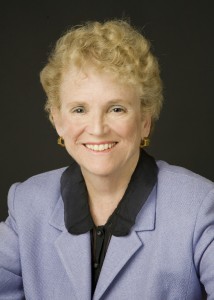- HOME
- ABOUT
- VIDEO FAQs
- What is the Equal Rights Amendment?
- How Does Not Having the Equal Rights Amendment Affect Me?
- Don’t Men and Women Already Have Equal Rights in America?
- Doesn’t the 14th Amendment Already Guarantee Women Equal Rights Under the Law?
- But What About the Other Laws We Have in Place to Protect Women?
- If the ERA is Ratified Will Women be Drafted?
- If the ERA is Ratified Will Women Have to Share Bathrooms with Men?
- Which Political Side is ERA On?
- PSAs
- FILM PRESS
- CONTACT
- DONATE
- FRIENDS
- ERA U
Currently viewing the category:
"News"

Guest Blogger Rachel Mellicker
Recently, I went to see a Broadway show. Flipping through the Playbill, I saw an article that upset me, provoking me to think and question the term “catfight.” The article by Harry Haun, was about a woman in a starring role in a Broadway production. Mr. Haun spoke about female actors who had been competing for her role, and described the competition as a “catfight”.
This made me furious. Actors always compete for the same role and the audition process can be very competitive, but this is not a reason to call it a catfight. Imagine if it had been men competitively trying for the same role. Such a negative word would never have been used, and if it had, the word would be questioned.
The definition varies a little according to the source, because some sources do not limit the word to a specific gender. The Merriam Webster website, however, says:

While this definition says nothing about having to be a physical fight, often the word wants to invoke thoughts of physicality. Catfights in popular culture tend to show women being very sexual and so sometimes catfights are thought of as “sexy” because of what the media has shown us. Our idea of a catfight is women screaming insults at each other and attacking one another physically. Even though in pop culture a “catfight” is usually between “sexy” women, in real life women can look any way and people will still say they are having a catfight.
According to Merriam Webster there must be millions of “catfights” everyday because people are always upset with each other. But the real problem is that catfight is a derogatory term. Our society tells us that it is a good and natural thing when men compete, but when women do it we have to sexualize it, laugh at it, and use it for the pleasure and amusement of others.
Why can’t women just compete with each other without having it being viewed negatively? When men compete with each other for a job it is completely normal, and nobody characterizes it, but when two women do, it is believed that they hate each other, and are having a catfight.
Why does our society think it is ok to characterize women in this way?
Women need to be able to compete and have disagreements without it being distorted into something negative and without the word catfight being used.
In fact, maybe men are uncomfortable that they can still learn from women that people can have a sense of community with those we don’t agree.
Can we try to conscientiously curtail our use of the word “catfight” to when there is actually a fight…………. among cats? Perhaps there was a time when the metaphor was clever and fresh but now it is old, lazy, sexist, and often just seeking a cheap laugh.
[ca_audio url=”https://eraeducationproject.com/wp-content/uploads/2012/07/KPFKJuly2012.mp3″ width=”500″ height=”27″ css_class=”codeart-google-mp3-player”]
 What the ERA Campaign Can Learn from the LGBT Movement by Zoe Nicholson
What the ERA Campaign Can Learn from the LGBT Movement by Zoe Nicholson

Author and Activist, Zoe Nicholson
While the media and citizens are celebrating the lightning speed of the accomplishments of the LGBT Movement the ERA Campaign has a lot to gain by noting some key elements which contributed to this historically high-speed success. Since I have walked both these lanes of the social justice movement for 40 years and in the last 10 come to the reckoning that all roads of oppression intersect, I have a few experienced insights I want to share.
As I have heard and repeated so many times, social movements take over 150 years, the LGBT Movement broke through that barrier. They really put their heads down and conquered the internet allowing them to create a true sense of urgency. It has cut broadcast time, organizing effort and fundraising immeasurably. However in the ERA campaign, many of our strongest supporters do not use facebook, youtube or Twitter. Even more of an obstacle is that many pro-ERA people do not regularly use email which leaves them not only out of the information stream entirely but, even worse, thinking there is no ERA interest whatsoever. This is a serious problem which carries a residual toxin of intergenerational division. In the future this will not be a problem, as in 10 years everyone will be using electronic communication but there is a lot of untapped strength and artificial unraveling right now hidden in the midst of this cultural shift.
Second, LGBT mobilized internally on all cylinders; from liberal bureaucrats to street radicals – every level pushed the status quo with focus on particular issues. Within the movement there was internal criticism about civil disobedience, arrest actions, marches, conferences all the way to loud disapproval of those orgs that wanted to slow down and build patient alliances with the White House. All that rabble rousing collectively created energy.
Third, the LGBT movement began paying attention and soliciting all avenues of support; corporations, members of Congress and the White House itself. Relentless, sometimes illegal and sometimes elegant pressure, from Alonzo Mourning’s house to black tie dinners, the President was pressed with no end in sight. It is well documented that his “evolution” was partially motivated by it.
Fourth, they recollected their history which brought the movement heroes, gravitas, weight, pride. It has had a tremendous effect. Young people take pride in the Queens of Stonewall and the Daughters of Bilitis all the way to Lady Gaga and Lt Dan Choi. Inspiring historic characters have been celebrated and movies made. Layer upon layer, like the Names Quilt itself, have contributed to radical change-making. History, from Stonewall to the White House Fence to hundreds of renown people coming out or announcing their advocacy, built an alliance and lineage.
Fifth is the current day tragedies. Terrible suicides and murders set hearts on fire but I would argue that every day that women are not in the US Constitution women and children die from inadequate wages, healthcare, loss of the comprehensive VAWA, too many things to list. What is different is that LGBT brought issues into focus, connected dots and, though there was never agreement on how, there was always agreement on the goal.
The ERA Campaign has so many things to our advantage; the ERA is already on the Democrat Party Platform, two strategies in play with bills in Congress (69, 21, 47, 39), stated support by members of Congress and the White House. To our disadvantage we do not have singular focus, many of our women’s organizations do not dedicate any work on this issue. While it might be perceived as too thorny to take on because of different strategies, it is really quite easy – fully support them both – all as do Carolyn Maloney and Tammy Baldwin, authors of each.
As a known champion of the ERA I am asked constantly, what is happening? Who is working it? Why isn’t NOW making it front and center? I think that the real question is why isn’t the entire country, which supports it by a margin of over 70%, on fire about this country advancing its position of women In leadership (ranking 72nd globally) and constitutional inclusion. While we invade other countries and insist on women quotas in elected seats and inclusive constitutions, USA merely writes her intention in a platform, on bills in every congress since 1948 and knows that we will never force the issue, that would be too messy. Women haven’t stormed the White House Fence for the ERA since 1981. We have not increased the number of women in Congress since then either.
While I am not a fan of the phrase, War on Women, I would say their most effective weapon is they are certain nothing will actually guarantee women’s rights but full constitutional equality and that remains allusive, out of focus and sounds like some history lesson. While women and liberation activists are busy trying to make every dollar = two, there is little time for such trivialities as the ERA. I can say with total honesty, the LGBT movement never allowed such a notion to dissuade them.
The LGBT movement had two pinpoint demands; repeal Don’t Ask, Don’t Tell and Marriage Equality. The opponent showed the reach of his hand with the passage of Prop 8. That was the tipping point and, even though it was only about California, the entire Queer Nation rallied and in less than a year, held a national march on Coming Out Day. Maybe the fact that it was California, incorrectly deemed the most progressive state, combined with removing a right already exercised by 1,800 couples, set all engines on warp speed. I ask, what could be more inciting than the litany of egregious attacks on US women, from family planning to wages to seniors to education, etc. the worst of it is we are being attacked by a Gatling gun, dispersing any vision we should be holding precisely.
To try to do my part, I am posting entries from my 1982 diary every day for 37 days at http://onlinewithzoe.com/ I do feel I am on a mission to make sure this time is not forgotten. Though we did not win the ERA at the time, some extraordinary women and men contributed to the unfolding of Gender Equality. It was a proud time when we truly practiced ALL HANDS ON DECK. There were fasters and civil disobedience and grassroots and legislative and bureaucrats and orgs and clergy and unity. It is a very inspiring time. Women and girls today deserve to know about it. The current day women’s movement needs to know about the radiant activism that has occurred along this long arduous path to equality. What you are doing now is in direct lineage, it is cumulative, Equality is on the way.
Susan Rose is a former Santa Barbara County Supervisor and served as Executive Director of the Los Angeles City Commission on the Status of Women. She was a founding member of the Santa Barbara Women’s Political Committee, an organization dedicated to helping women achieve elected and appointive office.
Susan Rose is also one of the wonderful women in Santa Barbara who have been early supporters of the ERA Education Project. Below is a portion of Susan’s recent article about the ERA:We need the Equal Rights Amendment.
“Equality of rights under the law shall not be denied or abridged by the United States or by any state on account of sex.”
I first read those words 40 years ago and believed the message was so simple that it would be added to the constitution in a few months. How naïve I was.
The Equal Rights Amendment was written by Alice Paul in 1921 and was first introduced in Congress in 1923 by two Republican congressmen, Sen. Charles Curtis and Rep. Daniel Anthony Jr., Susan B. Anthony’s nephew. It took 49 years but it finally passed both houses in 1972. Ten years later, in 1982, the amendment was three states short of the 38 states needed for ratification.
Does it really matter if we have an ERA? Unquestionably.
For women, full citizenship has not yet been achieved.
Since we attained the right to vote in 1920, issues affecting women have polarized the nation.
Decade after decade we are faced with a see-saw battle over most of the issues that define or affect women’s lives: health care, reproductive freedom, contraception, rape, domestic violence, equal pay, paid family leave, childcare, gender balance in office, gay marriage and lesbian rights. The fight for women’s equality is ongoing.
http://articles.latimes.com/print/2012/mar/24/nation/la-na-gop-race-sixties-20120325
In September 2010, Supreme Court Justice Antonin Scalia stated “the Constitution does not protect against sex discrimination.” For 40 years, case law has implied that the 14th Amendment prohibits discrimination based on sex, but it has not translated to the daily lives of women. With Scalia sitting on the Supreme Court, it is more imperative than ever that women obtain a constitutional guarantee of equal treatment; one written proactively to affirm women’s rights.
http://www.aclu.org/blog/womens-rights/constitution-protects-women-despite-justice-scalias-views
An equal rights amendment would “provide a fundamental legal remedy against sex discrimination and ……would clarify the legal status of sex discrimination for the courts.” Women would have a legal path to equal rights ending the need to fight issues on a case-by-case basis.
http://www.equalrightsamendment.org/faq.htm
Across the nation, attacks on women’s rights continue. We are social and political targets in Congress and in state legislatures. It seems to reach new heights during presidential campaigns.
Rush Limbaugh denigrates a young female law student testifying before Congress on the need for access to contraception;
the Komen Foundation denies funding to Planned Parenthood, an organization that offers free breast cancer screening to women, but it backfires;
Republicans oppose the reauthorization of the federal Violence Against Women Act unless there are local matching funds;
Georgia passes a bill that criminalizes abortion after 20 weeks gestation with no exception for rape or incest, joining six other states with similar restrictions;
the Supreme Court stands poised to invalidate the Affordable Care Act which provides women with preventive health care, well-visits, contraception, and counseling for domestic violence with no co-payments.
American women remain far behind the rest of the world when it comes to equality. The U.S. Senate has refused to approve the treaty known as CEDAW (Convention on the Elimination on all Forms of Discrimination Against Women.) Adopted in 1979 by the United Nations, CEDAW is the only international instrument that comprehensively addresses women’s rights, politically, culturally, economically and socially.
Throughout the world, this treaty is used to empower women and enforce their rights. The United States is one of four countries that have not passed the treaty. They include Iran, Somalia and Sudan; each known for their violations of international human rights principles.
http://globalsolutions.org/human-rights/cedaw
Forty years ago, passage of the ERA failed for reasons both cultural and political. The ERA contest transformed “the ratification from the politics of sex into the politics of gender” differences. To the opponents of the ERA, equality for women would mean the loss of “womanhood.” Those cultural and political wars continue today. The Republican candidates for president have focused on women’s health and made contraception and eliminating Planned Parenthood part of the current political debate.
http://www.amazon.com/Sex-Gender-Politics-ERA-Nation/dp/0195038584
Is the political climate any better now for the ERA? Filmmaker Kamala Lopez has created a video PSA to educate voters and especially young people who are unaware of the need for an ERA. Lopez’s video reveals that three-quarters of Americans believe women have a constitutional guarantee of equality despite the fact they do not.
https://eraeducationproject.com/
On June 22, 2011, ERA ratification bills were submitted to Congress by lead sponsors Rep. Carolyn Maloney and Sen. Robert Menendez. Previously in March, 2011, Representative Tammy Baldwin submitted a resolution that would remove the ERA deadline and make it part of the Constitution when three more states ratify it. These proposals remain bottled up in committees.
Women continue to be second-class citizens. Since we represent only 17 percent of the members of Congress, our voices are rarely heard.
With the U.S. Senate’s refusal to approve the CEDAW treaty, American women and men must pass a national ERA to ensure equality for all women. It will send a signal that women have a written guarantee to equal treatment in the law, once and for all.
But how do we get there? For years women have been put on the defensive. Fighting both rhetoric and action, we are diverted trying to simply hold our ground. What we need is an American Spring like our sisters in the Arab world. Let’s go to the squares, town halls and legislatures of our communities and end these rants and attacks that have continued since women won the right to vote.
We must organize to pass the ERA. Use the internet, Facebook and Twitter like activists did in Tunisia, Egypt and Libya. Let’s make the ERA an issue for the 2012 presidential election.
I call on all women to join forces, collaborate, and work for the advancement of our mothers, sisters and daughters. Women differ on many issues but we share the belief of equality, the basic tenet of our democracy.
It’s time for the ERA. 2012 is our year. I will be there. Join me!
There was an article posted in the Huffington Post yesterday urging the need for the ERA. Click below to read it.
The Equal Rights Amendment: Now is the Time by Paul Abrams


